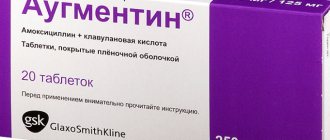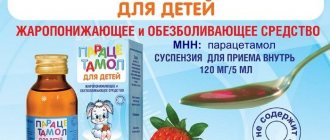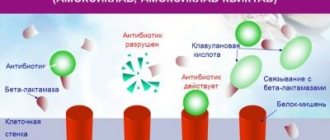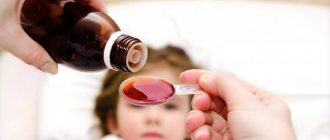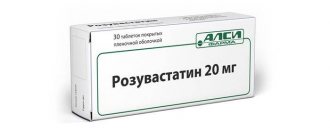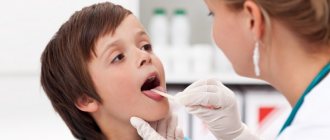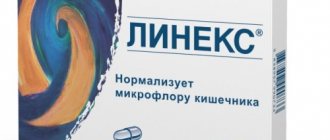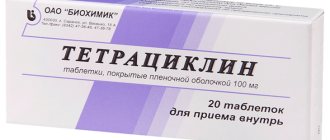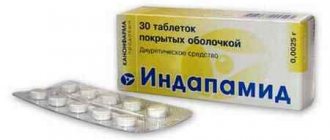Today we will talk about the Diaskintest skin test - a method for diagnosing the incidence of tuberculosis, which replaced the well-known Mantoux test; on the website we will talk in detail about the essence of the test, indications and contraindications for its implementation, side effects, methods of implementation and evaluation of the results.
The problem of the spread of a disease such as tuberculosis is gaining momentum every year. According to statistics, more than 90% of the adult population are infected with a mycobacterium called Koch bacillus.
Infection does not mean disease at all. The bacterium can remain in the human body for a long time without multiplying, without affecting organs, and without revealing its presence. Up to a certain point, the carrier is not dangerous to others. This is typical for latent forms of tuberculosis.
But when the right moment arrives, the bacteria become active and begin to produce toxins. The main and reliable method for detecting tuberculosis in adults is FLG (fluorography).
Despite the very low radiation dose, this method of diagnosing Tbc is contraindicated for children. To identify bacteria in children under 17 years of age, a Mantoux tuberculin test is performed, and if necessary, the study is supplemented with the drug Diaskintest (sometimes you can see the name “Diaskin test” written separately).
Diaskintest - what is it
For reference. Diaskintest is the trade name of a diagnostic method that allows you to determine the presence of an immune response to the entry of Koch bacilli into the body.
Diagnosticums for diaskintest are obtained in laboratory conditions. To do this, E. coli are trained to produce two protein antigens of mycobacteria, by which the immune system recognizes a tuberculosis infection.
E. coli are normal microflora of the human body and do not pose any threat to health. They are trained by introducing genes responsible for the synthesis of the necessary two proteins.
For reference. Modified E. coli begin to produce mycobacterial antigens, which are used to prepare Diaskintest.
An extract of the necessary proteins is prepared and diluted with physiological solution in the required dilution. Standard Diaskintest kits already have the required dosage, where 0.1 ml is equal to one dose of antigen.
Specificity and sensitivity of the method
For reference. Specificity is an indicator that reflects the number of false positive responses.
According to statistics, up to 2 people out of 100 healthy people who take the test receive a false answer. This indicator is considered high in comparison with other research methods.
False-positive responses occur due to the fact that there are acid-fast bacteria that are antigenically similar to Mycobacterium tuberculosis .
For reference. These infectious agents do not cause a specific disease, but stimulate the formation of immunity against Koch bacillus antigens. The human immune system recognizes them as Mycobacterium tuberculosis, and therefore subsequently reacts to Diaskintest.
Sensitivity is the opposite of specificity. It determines how many false negative answers researchers receive per 100 samples taken.
For Diaskintest, the rate ranges from 4-12 false responses per 100 tuberculosis patients who underwent the study. This means that up to 12 people out of 100 with tuberculosis will receive a negative result after undergoing the diaskintest. This figure is considered high.
Thus, despite the presence of false-positive and false-negative responses, Diaskintest is considered a fairly specific and sensitive technique.
Purpose of Diaskintest
For reference. Diaskintest is necessary to assess the immune response to the introduction of Koch bacillus antigens.
The fact is that upon contact with any infectious agent, the human immune system produces specific cells and macromolecules. These include T lymphocytes and antibodies produced by B lymphocytes.
Upon first contact with an infection, in response to its antigens, the body begins to produce antibodies and train T-lymphocytes. The immune system has a memory for antigens, so upon repeated contact with the same infection, the immune response is already ready. The action of Diaskintest is based on this principle.
The test contains specific recombinant proteins of Mycobacterium tuberculosis. These proteins are antigens by which the immune system recognizes Koch bacilli. If the body has already encountered a mycobacterium, there are specific T-lymphocytes against these antigens.
For reference. Diaskintest is carried out using intradermal injection of mycobacterial proteins. In the presence of immunity, T-lymphocytes rush to the injection site and cause a local allergic reaction. Objectively, this is manifested by local inflammation.
Immunity for tuberculosis is formed in two cases: after suffering primary tuberculosis in the past and with active tuberculosis in the present.
It is necessary to be able to differentiate these two options, since the diaskintest will show a positive result in both cases. If there is no immune response to the introduction of the antigen, then the result of the diaskintest will be negative, which may also indicate several conditions associated with both lack of contact with mycobacteria and profound suppression of the immune system.
What is Diaskintest, photo, difference from the Mantoux test
Mantoux or Diaskintest - which is better, more accurate and safer for a child?
The Mantoux test has been used in medicine for about 100 years. The basis of the drug is tuberculin, produced by Mycobacterium tuberculosis. When it is administered, the body reacts with a response.
But a false positive response is often observed. This happens for various reasons - increased sensitivity, use of the drug when the child is ill, children under 6 years of age often have a positive result, recently received BCG vaccine, previously had tuberculosis, the presence of mycobacteria of other diseases.
In this case, the doctor bears increased responsibility. It is important not to miss the onset of the development of pathology and not to prescribe dangerous medications to prevent tuberculosis in its absence.
Diaskintest is an artificial drug, a synthetic analogue of the proteins of Mycobacterium tuberculosis. The drug was developed by Russian scientists and since 2009, by order of the Ministry of Health and Social Development, it must be used for all children from 8 to 17 years old.
Of course, there is a chance of a false positive result, but much less than with Mantoux. The drug does not react to the presence of other bacteria, to immunity after recovery from tuberculosis, or to the BCG vaccine. If necessary, this skin test can also be performed on an adult.
The composition of the drug Diaskintest includes not only protein analogues, but also water, a preservative and a stabilizer. Their content is so small that it poses absolutely no danger to the child’s body.
As for parents who have an extremely negative attitude towards vaccinating their children against various diseases, they can be assured that the Mantoux test and Diaskintest are not a vaccine or an inoculation. After them, it is also impossible to develop the disease or immunity to it. This is only a test performed to detect latent and active forms of tuberculosis.
Indications
There are few indications for prescribing Diaskintest. Most often it is performed on children for preventive purposes. In many countries, including the Russian Federation, Diaskintest is used instead of the Mantoux test in children attending preschool and school institutions.
Regardless of the presence or absence of tuberculosis symptoms, all children are tested at school.
For children, the indication for an emergency test is the presence of symptoms of tuberculosis, for example, prolonged persistent cough or antibiotic-resistant pneumonia.
Attention! If a child has had a Mantoux test and it turns out to be positive, he should also have a diaskintest.
The informativeness of the test in this case is explained by the fact that persons who have never been in contact with wild strains of mycobacteria do not have immunity to the two diagnostic antigens used in the test.
If the reaction is positive, then the child has already become infected with tuberculosis. Either he is currently suffering from it, or he suffered from the primary form of tuberculosis and is now healthy.
It makes no sense to carry out this technique in adults for prophylactic purposes. Almost every person over 18 years of age has immunity to Mycobacterium tuberculosis.
Important. The indication for diaskintest in adults is the suspicion of an open form of tuberculosis.
A test may be ordered for the following symptoms:
- the presence of an infiltrate or pathological focus in the lungs that cannot be treated with conventional antibiotics,
- persistent cough for more than two weeks,
- causeless increase in body temperature to subfebrile levels or emaciation.
Attention. Diaskintest acquires diagnostic value only if it is used in combination with other methods for diagnosing tuberculosis.
After treatment of tuberculosis, a test is also used to assess the effectiveness of the therapy.
Indications and contraindications. How is the procedure performed?
Diaskintest is used as an intradermal test. Thanks to the drug, it is possible to identify the presence of tuberculosis, a person’s predisposition to it, and also determine the degree of activity of mycobacteria of the disease. All age categories are suitable for the procedure.
In addition, the test can be used to detect reactions from vaccines. Along with other methods, indicate the effectiveness of actions aimed at combating tuberculosis infection. The use of the drug is possible not only for diagnostic purposes, but also for the individual needs of the patient.
Groups of people who are predisposed to infection according to preliminary examinations must be tested for tuberculosis. For this category of people, when conducting the Diaskintest, all criteria must be taken into account: medical, social, environmental, etc.
Research can also be carried out for the category of persons in whom, during activities aimed at diagnosing tuberculosis, a suspicion of infection was discovered. It is also important to have preliminary laboratory tests for the presence of mycobacteria in the body. The entire range of measures must be carried out in a tuberculosis dispensary.
To ensure high-quality and effective monitoring of the condition of persons registered in a special anti-tuberculosis institution, it is necessary to regularly take samples at least twice a year using the drug Diaskintest.
Depending on the indicators after the procedure, you can make an accurate conclusion about the patient’s condition and, if necessary, send him for treatment. Persons who are at risk and who ignore testing for the presence of Koch's bacillus endanger not only their body, but also the health of the people around them.
How does the procedure work?
The test is done in the same way as all other tests. Diaskintest is injected under the skin with a syringe specially designed for the procedure with a very thin needle.
There is no difference in which hand the test will be done on. This can be anywhere between the wrist and elbow. But experts usually try to conduct the test on the hand that is used less by the person. The main reason for this choice is to avoid damage to the area where the injection was given. After all, it is at the injection site that doctors determine the diagnosis of tuberculosis or exclude it. There are situations when you have to do two tests at the same time (Diaskintest and Mantoux). Then both hands are involved in the process (Mantoux will be done on one, and Diaskintest on the other).
Contraindications
This product has a small number of contraindications, as it was developed relatively recently. The components of Diaskintest are absolutely safe for all age groups, as well as pregnant women.
But there are still some restrictions on its use:
- the presence of various inflammations in the human body;
- the patient at the time of the procedure is suffering from an acute respiratory infection or acute respiratory viral infection;
- increased body temperature;
- intolerance to the components of the drug;
- runny nose with complications. Any type of cough.
Contraindications
Contraindications to the technique are:
- Infections, excluding those suspected of tuberculosis;
- Any chronic pathology in the stage of decompensation;
- Skin diseases that prevent the test from being performed on both hands;
- Allergic reactions tolerated at the time of the procedure;
- Introduction of preventive vaccination less than a month before the test;
- Any form of epilepsy.
For reference. It is worth noting that impaired renal and liver function do not affect the test. In addition, Diaskintest is not contraindicated for pregnant and lactating women, but only if an active form of tuberculosis is suspected.
Diaskintest - side effects
The human body is individual, so it is impossible to say that there will be no side effects. The drug Diaskintest is low-toxic and rarely causes side effects on the body, but they do exist:
- low-grade fever in the evenings;
- allergic reactions (swelling of the nasopharyngeal mucosa, shortness of breath, redness of the sclera of the eyes, itching at the injection site, rarely throughout the body);
- moderate intensity headache;
- in adults, pressure changes may occur;
- A hyperergic reaction is an overly sensitized reaction to Diaskintest and occurs with individual hypersensitivity to the components of the drug. Physiologically manifests itself in the formation of an infiltrate of more than 15 mm, the skin is inflamed, ulcers form, and the lymph nodes of the neck and armpits become inflamed. A hyperergic reaction can also be an indicator of the activity of the tuberculosis process in the body, so differential diagnosis is needed.
Sample frequency
Diaskintest is used annually for children for the purpose of early diagnosis of primary tuberculosis. If the child has not been vaccinated with the BCG vaccine, more frequent monitoring is necessary. Such children are tested at least once every six months.
For adults, there is no such periodicity. As a method of early diagnosis of active tuberculosis, Diaskintest is not very informative. Adults undergo a fluorographic examination annually, and a diagnostic test is carried out only if indicated.
For reference. Testing can be repeated after any period of time, if necessary.
Adverse reactions
Adverse reactions are extremely rare and are due to individual sensitivity to the drug. Such reactions include:
- Headache;
- Increased body temperature, usually to subfebrile levels;
- Weakness, fatigue;
- Nonspecific allergic reaction at the injection site.
The few side effects and a small percentage of occurrence are due to intradermal administration of the drug. Diagnosticum does not enter the systemic circulation, therefore it extremely rarely causes generalized reactions.
For reference. More often, side effects are associated with a violation of the diaskintest technique. In this case, extensive hematomas may form at the site of drug administration, generalized allergic reactions may develop, and in the elderly, blood pressure may increase.
Positive reaction: necessary measures
When the test is indicated:
- During a preventive examination for tuberculosis, if a person is not sick, a negative Diaskintest is determined;
- To monitor disease activity in patients receiving treatment. With complete cure, a negative result is revealed;
- To distinguish it from other ailments not related to tuberculosis;
- To check the quality of the BCG performed, since Mantoux in this case is positive;
- To monitor the quality of treatment.
Contraindications, or under what conditions Diaskintest should not be administered:
- Acute infectious processes, colds;
- Relapse of chronic illnesses;
- Allergies in the body, acute period of asthma in the lungs;
- Skin diseases with pustular rashes;
- Epileptic seizures;
- Vaccination with vaccinations.
Sometimes the test causes side effects, such as weakness, headache, and a slight increase in body temperature. These conditions are not dangerous, they pass very quickly.
The danger of diaskintest
This diagnostic method is considered relatively safe. The opinion that during diaskin you can become infected with tuberculosis is erroneous.
Diagnosticum does not contain mycobacteria or their tissues. Only two proteins carrying an antigenic load are introduced.
Important. These proteins cannot cause any disease other than an immune reaction. In addition, the drug does not even contain E. coli, on which the necessary proteins were grown. Only the sterile extract is administered.
The only possible danger is the risk of developing a nonspecific allergic reaction. A hypersensitivity reaction is possible to any foreign protein.
In the case of Diaskintest, allergies are more often local and in rare cases generalized forms with symptoms typical of hypersensitivity are observed.
Contraindications for use
Diaskintest and Tuberculin do not contain functional Koch bacilli - it is impossible to get tuberculosis after their introduction into the body. In addition, they do not lead to the development of immunity to tuberculosis, since they are not vaccinations. There is other useful information that patients usually do not attach importance to:
- The discomfort sometimes observed after the test is not dangerous. This is a reaction to foreign proteins;
- Children are tested for tuberculosis at least once a year because they are more susceptible to Koch bacilli infection. Adults (including pregnant women) are examined if they are registered at a tuberculosis dispensary or regularly have household contact with people infected with tuberculosis;
- The protein contained in Diaskintest can cause allergies. It will be a contraindication for further DST testing;
- if the Mantoux test result is positive, Diaskintest can be administered to children from one year of age;
- children with a Mantoux turn but a negative Diaskintest result are put under control. The introduction of the modern drug is repeated after two to three months;
- Diaskintest can be false negative in people suffering from immunodeficiencies and serious chronic diseases.
Like many medications, the diagnostic test has its side effects and contraindications. Diaskintest is not recommended for use in the following cases:
- development of infectious diseases;
- exacerbation of somatic diseases;
- acute manifestations of skin diseases;
- development of allergic reactions;
- manifestations of uncontrolled epileptic seizures.
There are no restrictions on the list of acceptable food products. The drug is safe, but it is recommended to perform the test during pregnancy with caution. The lactation period is not a relative contraindication. Diaskintest has few side effects, these include:
- slight increase in temperature after injection;
- allergy to protein (redness of the eyes, swelling of the nasopharyngeal mucosa, shortness of breath, itching);
- pressure surges (in older people).
- Order of the Ministry of Health and Social Development of the Russian Federation No. 855 of October 29, 2009 “On amending Appendix No. 4 to Order of the Ministry of Health of Russia No. 109 of March 21, 2003”
- Federal clinical guidelines for the diagnosis and treatment of latent tuberculosis infection in children, approved by the Russian Society of Phthisiologists, ed. Doctor of Medical Sciences prof. V.A. Aksenova, 2015
- Recommendations for screening and monitoring of tuberculosis infection in patients receiving genetically engineered biological drugs, approved by the Association of Rheumatologists of the Russian Federation in 2013 with additions from 2016, ed. Borisova S.E., Lukina G.V..
- Clinical guidelines “Latent tuberculosis infection (LTBI) in children”, 2016
- Clinical recommendations “Identification and diagnosis of tuberculosis in children entering and studying in educational institutions”, ed. Doctor of Medical Sciences prof. V.A. Aksenova, 2019
- Order of the Ministry of Health of the Russian Federation dated March 21, 2019 No. 124n “On approval of the procedure and timing of preventive medical examinations of citizens in order to detect tuberculosis”
1 Kiselev V.I., Baranovsky P.M., Pupyshev S.A. et al. A new skin test for the diagnosis of tuberculosis based on the recombinant protein ESAT-CFP. Mol. honey. -2008. — No. 4. — P. 28–34
2 Kiselev V.I., Baranovsky P.M., Rudykh I.V. and others. Clinical studies of the new skin test “DIASKINTEST®” for the diagnosis of tuberculosis. Problem tube and lung diseases. — 2009. — No. 2.- P. 1–8
3 Lebedeva L.V., Gracheva S.G. Sensitivity to tuberculin and infection with Mycobacterium tuberculosis in children. Problem tube and lung diseases. — 2007. — No. 1.- P. 43–49
4 Order of the Ministry of Health and Social Development of the Russian Federation No. 855 dated 10.29.09 “On introducing amendments to Appendix No. 4 to the order of the Ministry of Health of Russia No. 109 dated 03.21.03”
5 Order of the Ministry of Health of the Russian Federation dated March 21, 2019 No. 124n “On approval of the procedure and timing of preventive medical examinations of citizens in order to detect tuberculosis”
6 Slogotskaya L.V., Senchikhina O.Yu., Nikitina G.V., Bogorodskaya E.M. The effectiveness of a skin test with recombinant tuberculosis allergen in detecting tuberculosis in children and adolescents of Moscow in 2013 // Pediatric Pharmacology, 2019. – N 1. – P. 99-103
7 Order of the Ministry of Health of the Russian Federation dated March 21, 2019 No. 124n “On approval of the procedure and timing of preventive medical examinations of citizens in order to detect tuberculosis”
Diaskintest and Mantoux
The presence of immunity to Mycobacterium tuberculosis antigens can be detected using several methods. The most common of them at the moment are the Diaskintest and the Mantoux test. Both methods have the same mechanism of action and even method of administration.
In both cases, 0.1 ml of diagnosticum containing Koch bacilli antigens is injected intradermally.
For reference. The difference is that Diaskintest is a genetically engineered product. The proteins are grown artificially on other bacteria and then removed. The drug contains only two antigens, which are found only in virulent (dangerous) strains of mycobacteria.
Tuberculin for the Mantoux test is prepared by extracting proteins from weakened mycobacteria. The antigenic structure of tuberculin is larger than that of diaskintest.
The Mantoux test gives a positive reaction not only to virulent strains, but also to the immunity left by the BCG vaccine. In addition, tuberculin produces more cross-reactions with other types of bacteria.
Important. The sensitivity of both methods is the same. However, Diaskin is more specific; it gives fewer false-positive reactions than the Mantoux test.
The advantage of tuberculin diagnostics is that it recognizes earlier immunity than diaskintest. The reaction to Diaskintest antigens occurs later than to other mycobacterial proteins.
Sometimes both tests can be performed on different hands.
Drug for detecting tuberculosis
Carrying out Diaskintest involves injecting a special drug under the human skin. It contains two active components - antigens CFP10 and CFP16. They are present in virulent strains of Mycobacterium tuberculosis, but they are not present in typical vaccinations against this disease - in BCG and BCG-m.
When determining whether to do Diaskintest or not, doctors still recommend the first option. This is due to the fact that this method of diagnosing the disease is more effective than the Mantoux test. It is completely safe and does not cause complications. Many parents prefer Diaskintest precisely because of these important factors.
Physiatry recognizes Diaskintest as one of the most advanced ways to examine a patient for tuberculosis. This is due to the following important aspects to pay attention to:
- the test is not a vaccination, but an allergy test;
- the accuracy of the result reaches 90 percent, while the Mantoux test gives the correct reaction only in 50-70 percent of cases;
- the drug does not contain mycobacteria, so infection is completely impossible.
Currently, some experts believe that the test for tuberculosis in the form of Diaskintest in the future will become the main method for diagnosing this disease.
Preparation for the administration of Diaskin
This technique does not require specific preparation, but there are a number of conditions that must be met. First of all, they concern children who have reached the age of the next preventive revaccination.
Attention. After any vaccination, Diaskintest can be done no earlier than a month later. Therefore, it is more advisable to first carry out diagnosis and then revaccination.
The BCG vaccine cannot be administered a month before the test and immediately after it. This should be taken into account when revaccinating BCG in children aged seven.
In addition, nonspecific allergic reactions in persons prone to them should be excluded. To do this, allergy sufferers are prescribed antihistamines in standard doses a week before the test, which lasts until the result is registered.
In addition, it is recommended to limit contact with allergens as much as possible after the test for the next three days. Persons with hay fever are not tested during grass flowering.
Adults should not drink alcohol for three days before the test and three days after it. There is no data on the effect of smoking on the results of the Diaskintest. In addition, after the test is performed, you can drive a car and take any previously prescribed medications.
Diaskintest - contraindications
Any drug has contraindications and Diaskintest is no exception. Diagnostics with the drug is contraindicated in the following cases:
- during quarantine in educational institutions;
- after illness for 3 months;
- weakened immune system;
- infectious and viral diseases;
- history of epilepsy;
- in case of hypersensitivity to the drug, Diaskintest should not be given to a child or adult;
- skin diseases in the acute stage (psoriasis, atopic dermatitis).
Where is testing done?
Diaskintest is an invasive diagnostic technique that can only be performed by medical personnel. For children, the test is carried out in educational institutions according to the preventive examination schedule. Adults can contact their local physician, in which case the diaskintest will be carried out in the manipulation room of the clinic.
In addition, there are institutions dedicated to the prevention, diagnosis and treatment of tuberculosis. These include specialized dispensaries, sanatoriums, and research institutes. They also conduct outpatient visits and have tuberculosis prevention rooms. You can contact one of these institutions and have a diaskintest done by specialists.
Where to do DST and how much does it cost?
The main institutions for conducting immunological research for the detection of Mycobacterium tuberculosis are:
- anti-tuberculosis dispensaries;
- research anti-tuberculosis centers;
- children's and adult clinics.
For children, the DST test is done in kindergarten and every year at school. During pregnancy, the test is indicated for women who are registered at a tuberculosis clinic or who have had the disease in the past.
Vaccination is indicated for pregnant women who have previously suffered from tuberculosis
If the vaccine is available, tuberculosis vaccination in public hospitals is free of charge. In private clinics, Diaskintest costs an average of 895 rubles.
Test procedure
The test can only be carried out by a specially trained nurse who knows the technique of intradermal administration of drugs. The fact is that administering the diagnosticum subcutaneously, intramuscularly or intravenously is a gross mistake. The test will be uninformative and may lead to complications.
The nurse checks the bottle for leaks, assesses the expiration date and appearance of the contents. After this, 0.2 ml of the contents of the bottle is drawn into a tuberculin syringe. This volume is equal to two diagnostic doses.
For reference. The middle third of the inner surface of the forearm is disinfected with alcohol, after which 0.1 ml of diagnosticum is injected intradermally, which is equal to one diagnostic dose. When administered correctly, a “lemon peel” will form at the injection site.
What can and cannot be done after vaccination?
The reliability of the results largely depends on compliance with the doctor’s recommendations after the manipulation.
- The injection site is prohibited from being treated with detergents, disinfectants and cosmetics.
- Do not bandage or tape the injection area.
- It is contraindicated to mechanically influence the skin in the injection area - rubbing, scratching, scratching.
Rubbing or scratching the injection site is prohibited
After the procedure, you can wash and wet your hand, but without using hygienic substances. There are no changes in a person’s diet and usual lifestyle, except for giving up alcohol and unhealthy foods - you can’t eat very fatty, salty and spicy foods. Eating sweets is allowed.
Contact of injection site with water
Diaskintest, like the Mantoux test, can be wetted. Water does not react in any way with the diagnosticum and does not change the test result. But it is not recommended to take a bath before recording the result.
This is due to the fact that an infection can get into the wound left by the needle from the water. As a result, nonspecific inflammation will develop, which will blur the whole picture. For the same reason, you should not rub the injection site with a washcloth, soap or towel.
You should also exclude visits to saunas, baths, swimming pools and open reservoirs. You can shower without restrictions.
About tuberculosis
The causative agent of the disease is Mycobacterium tuberculosis. Develops against a background of decreased immunity, malnutrition, frequent hypothermia, malnutrition, HIV infection, drug addiction, and nervous hypothermia. Transmitted in several ways:
- Airborne: through communication, sneezing, contact with a patient;
- Household: when using dishes, things, kissing, etc.;
- Through contact with the carrier;
- Food: eating affected food;
- Intrauterine: from mother to child.
In the acute form of tuberculosis, a prolonged and wet cough with sputum production is observed; hyperthermia. The patient sharply loses weight, complains of fatigue, and a general deterioration in health. Performance is lost.
The cough is wet and pronounced. Occurs in the form of frequent attacks, especially in the morning. Often the disease at the initial stage is mistakenly confused with “smoker’s cough”, symptoms of chronic bronchitis.
According to statistics in the CIS countries, approximately 90% of people are carriers of Koch's bacillus. In this case, 5% get sick. The development of tuberculosis depends on the level of immunity. Therefore, the main method of preventing the disease is maintaining a healthy lifestyle. Children are required to be vaccinated; regular samples and tests are carried out, with the help of which it is possible to establish in the early stages.
results
The result is assessed exactly three days later, measuring the morphological elements remaining at the injection site with a ruler perpendicular to the axis of the forearm. What matters is the size and appearance of the morphological element.
Possible results
There are three types of reactions to drug administration:
- Negative. An injection mark remains and other morphological elements are absent.
- Doubtful. There is no subcutaneous induration at the injection site, but there is redness of varying sizes.
- Positive. A compaction of various diameters is felt under the skin. As a rule, it protrudes above the surface of the skin in the form of a nodule (papule).
A positive result is divided into varieties as follows:
- Weak – the compaction does not exceed 0.5 cm in diameter;
- Moderate – compaction from 0.6 to 0.9 cm in diameter;
- Pronounced – the diameter of the papule is from 1 to 1.5 cm;
- Hypersensitive – induration more than 1.5 cm or the presence of other morphological elements (pustules, crusts, inflammation of the lymphatic vessels).
Interpretation of the result
A negative result is observed if the body has never encountered Mycobacterium tuberculosis. In countries with a poor epidemic situation, a negative result is most often found in children.
Attention. In adulthood, a negative result means immunosuppression.
For example, it occurs in HIV-infected people in the AIDS stage even if they have active tuberculosis.
A questionable result does not give a clear answer about the strength of the immune system and requires a repeat test after 2-3 months.
For reference. A positive result means either immunity due to previous history of tuberculosis, or active disease at the moment.
As a rule, the severity of the reaction correlates with the activity of the pathological process. Persons with a positive reaction are subject to further examination in order to make a final diagnosis.
Reaction by day
For reference. Immunity to mycobacteria is formed in the form of delayed-type hypersensitivity. This means that the immune reaction to the administration of the drug will begin no earlier than in a day. However, due to the small dose of the drug, the response develops slowly.
A day after the test, hyperemia or a small thickening may appear, which gradually increases in size.
It reaches its maximum only on the third day.
The appearance of a reaction several hours after administration of the drug speaks in favor of a nonspecific reaction.
Allergy to Diaskintest
An allergy to Diaskin develops in less than a third of the subjects, which is due to the protein origin of the drug. A nonspecific allergic reaction develops along the path of immediate hypersensitivity and occurs a few minutes or hours after the injection.
In this case, the following are observed:
- local itching,
- hyperemia of the injection site,
- possible formation of urticaria.
Less commonly, a generalized reaction occurs with lacrimation, runny nose, and swelling of the eyelids. Even less often, Quincke's edema appears or bronchial asthma worsens. If an allergic reaction occurs, you should take an antihistamine and consult a doctor who referred you for Diaskintest.
Bruising at the injection site
Bleeding or a small bruise is not a sign of a reaction. It occurs when a vessel has been damaged. Even if the injection technique is followed, it is possible that the superficial vessels may be injured by the needle.
For reference. The bruise is not taken into account when assessing the results.
Positive test
In adults and children, a positive diaskintest result can be interpreted differently. In children, the first positive result is called a test turn. It means that the child has encountered Mycobacterium tuberculosis for the first time.
In this case, a primary infection develops, which, as a rule, is asymptomatic, leaving behind lasting immunity. In order to identify the danger of the disease for a particular child, a consultation with a phthisiatrician is necessary.
In adults, a positive result means that immunity to mycobacteria has already been formed. As a rule, people living in the CIS countries suffer from primary tuberculosis before they reach adulthood, because adults have immunity.
If the diaskintest gives a positive result in an adult, this can be considered normal. However, a pronounced reaction may also indicate active tuberculosis.
For reference. The more pronounced the immune response to the drug, the greater the chance that the patient has an active form of tuberculosis. Only a TB doctor can give a final conclusion after an additional examination.
Norm and pathology
The result is assessed by a doctor or nurse with appropriate skills.
The sample is evaluated three days after administration of the drug.
What does a negative Diaskin test look like?
The reaction is considered negative if only a trace of the injection up to 2 mm remains on the skin.
Doubts for a specialist can be caused by hyperemia of the skin at the injection site in the absence of infiltration in the form of edema or swelling of the skin of the forearm.
A positive Diaskintest is determined by a specialist in the presence of an infiltrate of any size:
- up to 5 mm (mild);
- 5-9 mm - moderate;
- from 10 mm - pronounced, from 15 mm - hyperergic reaction.
Features of the vaccine
"Diaskintest" allows you to detect infection if the tuberculosis pathogen has entered the body, even if the form of pathology is still latent - the result will be positive. But in the case of a latent state, Diaskintest will give a negative answer. The drug does not provoke infection in the body, but only shows a reaction. If it turns out to be positive, treatment should be started immediately. The drug is sensitive, selective, and allows you to control the effectiveness of treatment, which is why Diaskintest is also used during therapy. The main disadvantage of Diaskintest in comparison with the Mantoux test is a possible false negative response for a certain type of tuberculosis pathogen. Also, Diaskintest will not give correct results if the pathology is severe, has developed to the stage of decay and has begun to worsen.
The vaccination can be done at a tuberculosis dispensary or clinic. As a rule, widespread vaccinations are regularly carried out in children's institutions. It is mandatory to test children first, as they have an increased susceptibility to any infections. Health care regulations in force in our country regulate the frequency of use of Diaskintest. From 8 to 17 years of age, it is necessary to carry out the test annually; if the result is negative, you can re-test after 60 days. If a person is registered at a tuberculosis dispensary, it is necessary to administer Diaskintest every six months or more often.
Diaskintest: rules of conduct
Like other methods for detecting tuberculosis, the Diaskintest test is placed in the hand in the area between the wrist and elbow. For the procedure, the limb that is least used in the patient is selected.
If Diaskin and Mantu are performed over a short period of time, then different tuberculin solutions are not injected into the same hand.
There are a number of contraindications for this vaccination. Thus, the d-test is not performed if an adult or child has epilepsy, since it can cause a seizure. The procedure is not recommended for pregnant women.
It should also not be carried out during periods of quarantine if you are allergic to the components of the drug. You should not expect a correct test result if it was done against the background of a cold or skin disease. Or when existing allergic reactions worsen.
The correctness of the result, which is checked 3 days after the vaccine is administered, may be affected by compliance with the rules for caring for the papule.
The main cause of distortion is infection in the damaged area of the skin. Therefore, for three days after the procedure, you should not disturb the papule or scratch it. And although exposure to water does not affect the result, microorganisms in the liquid can cause more harm. Therefore, you shouldn’t get the button wet either.
Mantoux or Diaskintest are indicated for children and adolescents aged 8-17 years once a year. Diagnosis is carried out 2-4 times more often for people under the supervision of a TB specialist or for those who have contact with an infected person.
The procedure is postponed for a month if the person has suffered an acute infectious disease. The BCG test is recommended for diagnosing newborns. But if she gives a positive result at this age, then the d-test can be carried out starting from a year.
What to do next
If the test is carried out according to the instructions and a small trace appears in the form of a red dot, the result will be negative. Then they take measures to prevent the disease: lead a healthy lifestyle, strengthen the immune system, avoid contact with infected people. If a medium-sized bruise or papule forms, Diaskintest with a questionable result is repeated after some time. A bruise without a papule is normal, and on the 3rd day the blued skin begins to acquire its previous shade.
If the size exceeds 20 mm, it is necessary to undergo a series of tests at a tuberculosis dispensary. If a child has a positive Diaskintest, then it is necessary to be examined by a phthisiatrician. Tests such as bacteriological urine culture, blood test, and CT scan are prescribed. For adults, an X-ray or film of the lungs is taken.
If there is a cough, sputum is examined. If, upon examination of the body, enlarged lymph nodes are found, they are sent for an ultrasound. As a result, there may be no deviations from the norm.
If treatment is refused, the patient is registered and the test is repeated 1-2 times in six months. If Diaskintest is negative, then the immune system has coped with mycobacteria. According to patient reviews, this is the best subcutaneous test that is well tolerated by the body. Unlike tomography and other types of research, this test does not expose the body to radiation. Infection with tuberculosis infection after the procedure is excluded.
In rare cases, general health may deteriorate. Sometimes the temperature rises or intermittent headaches occur. The Mantoux reaction can be large even in the absence of tuberculosis pathogens in the body. This value occurs after the BCG vaccination has been given. If the Diaskintest results are positive, and the tests and x-rays are good, then you need to be tested again. This happens in patients after treatment for tuberculosis infection. It is necessary to be examined further.
Instructions for use
Diaskintest is a specific drug. Before carrying it out, many things must be taken into account so as not to get a false result.
The best thing is to schedule the procedure before vaccination, and if the child is already vaccinated, you will have to wait a month. If the DST result is negative, you can get vaccinated immediately after it. If the Diaskintest result is poor, immunization will only be possible after six months.
Adult patients should refrain from drinking alcohol for 2-3 days before the procedure and the same amount after. But, in general, no special preparation is required.
Both Diaskintest and Manta are done in a sitting position. The sample is performed by an experienced specialist with permission. Tuberculin syringes with a beveled cut on thin needles are used. The physician is obliged to check the expiration date of the drug, which is indicated in the instructions from the manufacturer, based on the release date.
The patient releases the forearm into which the sample is placed. The injection site is treated with an antiseptic. The doctor pulls back the skin and injects 0.1 ml of the composition parallel to its surface. A papule with a diameter of 7 to 10 mm appears on the skin. The medical specialist monitors the patient for some time in order to take action if complications develop.
Diaskintest: principle of action
Diaskintest is used to perform an intradermal test in all age groups for the purpose of:
- Determination of the phase of development of tuberculosis;
- Identification of individuals at high risk of developing the open form;
- Diagnosing the form of the disease;
- Treatment activity assessments, etc.
A test through the Diaskintest test is carried out in the following cases:
- Persons who have received a referral to an anti-tuberculosis institution for examination for the development of the tuberculosis process;
- Persons at high risk, taking into account epidemiological, medical and social factors.
One dose of the drug contains recombinant protein CFP10-ESAT6 - 0.2 μg, sodium phosphate. Existing synthetic antigens, after being introduced under the skin, cause an allergic reaction. This form of manifestation indicates the presence of an active phase in which tuberculosis develops or infection occurs without the formation of pathology. Additional components: sodium chloride, potassium phosphate, polysorbate 80, phenol.
What to do if the result is different from the norm?
The norm in children and adults is the almost complete absence of traces at the injection site after three days. If the test turns out to be positive, then tears and panic will not affect the result in any way and will not change it. Next steps should be as follows:
- Adults must undergo fluorography, and children undergo an X-ray of the lungs.
- Babies may be prescribed an ultrasound and tomogram of the lungs.
- Pass a standard set of tests.
- Visit a TB doctor, remembering to take all the test results with you.
- The doctor may order a repeat test after some time if all other tests are good.
- Once the diagnosis is confirmed, you must prepare to undergo therapy. Parents must prepare their child for treatment, which will be long and difficult.
The responsibility falls on the parents to ensure that they conscientiously take prescribed medications. The intake must be carried out strictly according to the regimen prescribed by the doctor.
If there are some doubts about the competence of the doctor who analyzed the body’s reaction to Diaskintest, then you can undergo PCR diagnostics. At the moment, this is the most accurate diagnosis of pathology, because it recognizes the slightest changes at the gene level that are provoked by the causative agent of tuberculosis.
False positive result
There are rare cases when the result of Diaskin turns out to be false.
This is considered a consequence of an incorrectly performed procedure. To clarify the situation, the child’s medical record is checked for recent pneumonia or other infection.
The cause of an erroneous diagnosis may be a tendency to allergies to the administered composition or the manifestation of other adverse reactions. This allows you to find out if there is a possible medical error and use other methods to diagnose tuberculosis.
It is equally important to evaluate the child’s behavior within two days, which are allotted for the manifestation of the reaction.
If the rules for caring for the papule were violated on his part, the study will be rescheduled. It is worth having a conversation with the child first, since explanations about the importance of obtaining an accurate result will encourage him to be more attentive in complying with medical instructions regarding the Diaskin test.
Let's summarize: according to reviews, Diaskintest is considered the most accurate way to detect the activity of tuberculosis pathogens. As in the case of mantu, the test is placed in the forearm area. The reaction is assessed according to several parameters: the size of the papule and its color.
A red lump larger than 4 mm in diameter is considered positive. This gives a reason to register and prescribe treatment as soon as possible, since the cost of delay is too high.
Vaccination or test?
The essence of the drug is in its name. Diaskintest (DST) is a test, not a vaccination. It reflects the body’s reflex to the activity of tuberculosis bacilli and helps prevent the development of a serious disease. This is the immune system's response to protein allergens entering the body, which states how "familiar" it is with these antigens. A positive reaction indicates: “sign” – infected or sick.
Since 2019, the drug has been used to detect tuberculosis in children 8-17 years old. In children under seven years of age inclusive, the mass diagnosis of the disease remains the same. Mantoux and Diaskintest are similar in their action, but a positive DST reaction is an indisputable indication for starting anti-tuberculosis chemotherapy.
Modern remedy: pros and cons
If we compare the Mantoux test and Diaskintest, we can note the advantages of the innovative product:
- selectively;
- highly sensitive;
- makes it possible to monitor the effectiveness of therapy.
A positive result with Diaskintest is observed when mycobacterium tuberculosis actively multiplies; it is extremely rare that allergic reactions cause it. The drug produces virtually no false-positive reactions. This is very important, since a positive reaction in a child leads to the use of unsafe medications.
If a patient has undergone Diaskintest and has developed a “non-tuberculosis” allergy, the symptoms are usually noticeable immediately. They disappear before the test scores are assessed. DST is often administered in case of positive Mantoux test reactions - for the correct choice of treatment tactics. But they cannot be replaced interchangeably. These diagnostic tests complement each other.
The D-test will not give a positive reaction if infected with bovine tuberculosis, and this variety is not uncommon in livestock breeding areas. This is the basis of anti-tuberculosis vaccination. In addition, practice shows: if the patient was given Diaskintest at the initial stage of infection, the reaction may be false negative.
Medical examinations are voluntary. No one can force a person to subject himself to one or another medical manipulation. But if you choose: the Mantoux test and Diaskintest or tuberculosis with long-term therapy and relapses, the answer is predictable. Of course, the trial and test is for the sake of your own health and the health of your loved ones.
Causes of questionable and hyperergic reactions
The response to the test can be positive, hyperergic and doubtful. Such processes indicate the absence of the disease and its pathogens in the body. The explanation for this is as follows:
- The reaction to Diaskintest occurred due to an infection in the body that did not cause corresponding symptoms. Other pathologies that contribute to the body’s reaction. Sometimes symptoms occur due to recent infection;
- Infection of the venue. This is especially true for children;
- Having an allergy with an inadequate reaction to an allergen;
- Somatic and autoimmune diseases.
There may be other reasons for such a reaction to the test. People predisposed to allergies are often given antihistamines before the test.
To avoid a false positive reaction, it is necessary to strictly adhere to contraindications. Adults are prohibited from drinking alcohol before and after the administration of Diaskintest. The breakdown products of ethyl alcohol with the reaction of the drug can cause redness of the injection site, which will be perceived as a positive Diaskintest reaction.
It is not recommended to wet the sample site, public baths, saunas, beaches or swimming pools. Such measures may cause a backlash.
How is Diaskintest different from Mantoux?
The main difference between Diaskintest and the classic Mantoux is the accuracy of the data. When performing Mantoux, the accuracy of the result ranges from 50 to 70%. Tests have shown that the intradermal test is 90% accurate.
In addition, each test has a different composition, which contains different active ingredients. In Mantoux, the main active element is tuberculin, contained in tuberculosis bacteria. However, this protein is present not only in tuberculosis, but also in microorganisms similar to the disease.
If you receive a positive result after Diaskintest, you can be completely sure of infection with tuberculosis, which means you can apply the correct treatment in a timely manner.
Thus, Diaskintest shows more accurate results in detecting a dangerous disease; apply treatment to avoid serious complications.
Why is Diaskintest dangerous?
The Mantoux test is almost always done in kindergartens and schools. You cannot refuse it, you can only get it from your own doctor and bring a certificate to the institution. Diaskintest is not yet very widespread and there are few reviews on it; moreover, it is often used to check the Mantoux result. Therefore, parents often wonder whether it is necessary to do a test and how dangerous it is.
If you follow all direct contraindications, the test will not cause any harm to the body. But, like many medications, side effects are possible as a result of its use: flushing, mild fever, headache, weakness and fatigue.
Rules of conduct after an injection
The algorithm for using Diaskintest and Mantoux is the same. In children, DST is given only 30 days after a previous vaccination, and the child must be absolutely healthy.
Rules that should be followed before assessing the test have been determined empirically:
- You should not take water procedures, despite the fact that it is allowed to wet the injection site;
- It is not recommended to scratch, rub the “button”, steam it, smear it with anything “for healing”, cover it with an adhesive plaster or wrap it with bandages;
- You should postpone sports training - sweat can distort the course of the reaction, changing a minus to a plus;
- You should refrain from sunbathing and walking in severe frost.
It should be noted what you should not do after performing the Diaskintest test:
- use perfume;
- use ointments at the site of ukaol;
- do not rub;
- or cover it with a plaster or bandage.
Otherwise, redness will occur on the first day, as a result the doctor will give an incorrect assessment of the results obtained.
At the same time, it is not forbidden to wet your hand after the diaskintest; you can wash yourself, but it is not advisable to wash the injection site. There are no restrictions in terms of food, the diet can be kept exactly the same as usual.
Sometimes, the test may give the wrong answer, but this is typical for all medicine in general. Moreover, errors are possible in all areas of modern medicine, regardless of what medicine, what kind of vaccination, what kind of diagnostic method.
In any case, Diaskintest today is the highest quality and modern way to determine the presence of a tuberculosis-type disease. It is almost completely safe and reliable. In addition, it allows you to predict in advance whether a person has a real chance of getting sick over the next year or two.
Advantages of the drug
This method of detecting tuberculosis is good because the body of adults is not exposed to radiation, as with fluorography and computed tomography. Such testing is often recommended for pediatric patients: the product is so safe that it does not harm even one-year-old babies.
In order to find out whether there is tuberculin in the patient’s body at the time of diagnosis, pediatricians and therapists recommend be sure to use Diaskintest. It is sensitive only to tuberculosis pathogens. It has practically no contraindications. We will tell you who should be wary of unpleasant consequences below.
Accuracy of results for a calm future
Doctors recommend doing Diaskintest in order to receive reliable information by monitoring the body’s reaction to the administered drug. However, it can also confuse. You can do Diaskintest when necessary:
- check how active tuberculosis is if the patient is already being treated (in the absence of contraindications and correctly selected treatment, the patient will recover and the infiltrate will not appear or its diameter will be less than 2 mm),
- identify the presence of other non-tuberculosis diseases,
- check a baby who has recently been vaccinated with BCG,
- see what the prescribed treatment leads to.
The doctor may additionally prescribe a blood test for the patient, provided that there are no contraindications and there is confidence that it will be possible to see the exact clinical picture.
The accuracy of the result obtained thanks to Diaskintest largely depends on the presence/absence of contraindications and the behavior of the child (adult) after vaccination.
Prices for services *
The average price for Diaskintest in Moscow is 1,400 rubles. carried out after visiting a phthisiatrician or pediatrician.
Where to do Diaskintest in Moscow? This service is available at the Yusupov Hospital clinic. Conducted by professionals. Clients are given the opportunity to undergo a preliminary consultation, and, upon receiving a positive result, undergo a course of therapy with additional techniques for a speedy recovery. Diaskintest can be done at an inexpensive price.
Reviews
I gave Diaskintest to both sons before entering school. Usually after the Mantoux test we have a pink spot without compaction, but here it’s just a mark from an injection. There were no allergies or side effects. The doctor said that everything is fine with us. Diaskintest did not help me identify the disease. For kidney tuberculosis, the test was negative, but the Mantoux test was positive. The diagnosis was made only after a comprehensive examination - ultrasound, tomography, blood and urine tests. I suffered from constant fatigue and body aches for about a year. My temperature was 37.5 all the time, but the doctors shrugged it off. As a result, a diaskintest was prescribed, which showed a positive result. I don’t know how much longer the doctors tortured me if it weren’t for the DST test. But it’s all over, and I’m already healthy.
The tuberculin vaccination Diaskintest is a modern alternative to the Mantoux test, safe for human health in the absence of contraindications. The test is highly sensitive to Koch bacilli, and its accuracy of results reaches 100%. DST reacts only to the causative agent of tuberculosis and does not show a positive result in people who have acquired immunity to the disease: patients who have recovered from the disease or who have been vaccinated with BCG.
Diseases
How to check Diaskintest
The body begins to react to the foreign protein immediately after the injection. A reaction will be visible in the form of the appearance of a small rounded papule. Sometimes it is absent, and then a red dot or spot is visible.
Otherwise, the Diaskintest result will be distorted. The most accurate indicators are measured on day 3.
The check is carried out by the attending physician or nurse. The place where the solution was injected under the skin is inspected. If the body is fighting a disease or the disease is in an active stage, an allergic reaction occurs. It manifests itself in the form of local symptoms. Pay attention to the condition of the skin. Has the skin acquired a reddish tint, are there any bulges and fluid accumulation?
Why might the results be false?
A questionable or false-positive result does not always indicate the presence of pathology. It may be received for the following reasons:
- Diaskintest was done without taking into account contraindications. For example, a false positive result can be given by a viral infection developing in the body.
- There is an infection at the injection site, which often happens in children who scratch it.
- Presence of a tendency to allergies. Against this background, the body may give an inadequate reaction to the test.
- Autoimmune and somatic pathologies.
- Before Diaskintest, the child received another vaccination. After it, the child’s body may not give the reaction that is expected.
- There is no information that the result can be affected by exposure to water at the injection site, but doctors still do not recommend getting it wet until the body’s final response is received.
The opposite situation happens, when the patient is sick with tuberculosis, and Diaskintest did not give a positive result. The reason for this may be:
- Cured disease.
- The presence of an inactive form of the disease.
- Tuberculosis is in the final stage.
- A negative assessment of the results in children may be observed if tuberculosis is severe and produces immunopathological disorders.
The final assessment should only be made by a doctor; if the situation requires, then an additional examination is prescribed and after two months another test for tuberculosis.
